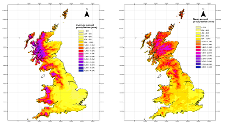
The long timescales involved in assessing safety of radioactive waste disposal means that the potential for climate and landscape evolution typically need to be taken into account. Quintessa has taken the technical lead of a four-year project to support Radioactive Waste Management Ltd’s (RWM) contribution to collaborative work on this topic within the International Atomic Energy Agency MODARIA programme (2012-2015). The summary report for the RWM project is now
The conclusions of three major reports are summarised with a focus on the UK context. The first of these reports provides a review of work on climate change and landscape development since the European Commission’s BIOCLIM project (2000-2003). The second report explores how results from global climate models can be downscaled to spatial scales needed for assessing safety for radioactive waste disposal facilities. The third report describes the processes involved in shaping landscape evolution on long timescales and reviews the potential for associated modelling informed by climate projections.
The project included supervision of an RWM-funded PhD at Bristol University’s BRIDGE unit. The research involved earth systems modelling for a range of emission scenarios to establish long-term projections of atmospheric carbon dioxide. Those projections provided an input to atmospheric-ocean general circulation modelling, simulating long-term climate.
The work has provided a substantial contribution to establishing up-to-date approaches and techniques available for projecting future changes in climatic and landscape characteristics for use in assessing the safety of radioactive waste disposal.